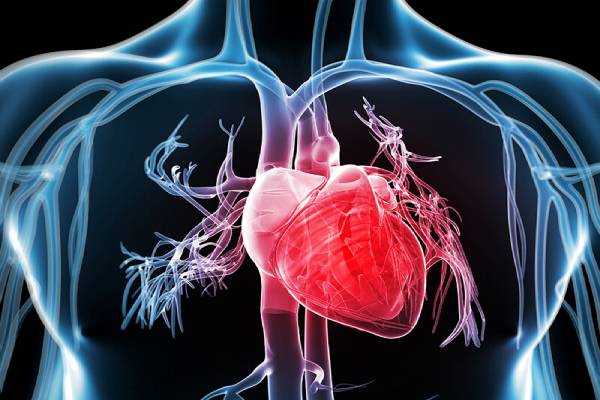Table of Contents
Angiography and angioplasty are both two methods for treating blocked blood vessels. Diagnosis of cardiovascular diseases can be done by angiography to check the blockage of blood vessels, and through angioplasty, narrow or blocked arteries can be opened. Angiography and angioplasty are often confused by patients. Angiography is a method for diagnosing cardiovascular disease and blockage of arteries, and angioplasty is a method for treating cardiovascular disease and blockage of arteries. Coronary angiography and angioplasty are very important for diagnosing and restoring cardiovascular health. Keep reading on Moj Aramesh Amitis Health Tourism Company’s website to learn more about angioplasty and angiography.

What is the difference between angioplasty and angiography?
In angiography, you will not feel any severe pain at all and you will feel only slight pain. Once the blockage in the arteries is detected, your doctor may perform angioplasty to open the blocked arteries, depending on the severity of the blockage. Following blockage of the arteries, blood flow to all arteries is restricted or stopped, eventually leading to cardiac arrest. But with angioplasty, cardiac arrest can be prevented. Angioplasty also minimizes the risk of major surgery in the future. Angioplasty is prescribed after angiography. Both angiography and angioplasty are safe and painless and do not require large, deep incisions during surgery, and postoperative care is very simple for both methods. Angioplasty is often recommended for patients with heart failure and myocardial infarction (hibernation, in which the heart muscle temporarily stops working due to lack of oxygen). People with heart failure who get worse for no reason or some reason also have angioplasty.
What is angiography and how is it performed?
The process by which blood vessels are imaged to detect obstruction in the blood vessels in the arteries is called angiography. During this process, a contrast dye is injected through a tube into the arteries of the arm or groin, which shows any problems in the arteries. The X-ray images are then taken of the arteries to determine what to do next. Angiography is a safe and painless procedure that lasts from 30 minutes to 2 hours. In general, this method is associated with few risks and complications. But the pain and bruising will be perfectly normal for one to two weeks after the angiography.
Rare Complications of Angiography
Angiography complications that rarely occur include:
- Severe allergic reaction to contrast dye
- Shortness of breath
- Dizziness
- Stroke
- Kidney damage (due to internal bleeding)
The mentioned complications are temporary and short-term and can be treated. Although angiography is a low-risk procedure with few complications. But angiography will not be performed until noninvasive heart tests such as electrocardiograms and stress tests or echocardiography are performed. It is recommended to drink a lot of fluids after angiography to remove contrast dye from the body.
Types of Angiography
Angiography has different types, including:
- Coronary angiography
- Aortic angiography
- Pulmonary angiography
- Cerebral angiography
- Kidney angiography
- Peripheral angiography
When is angiography performed?
In the following cases, angiography will be prescribed by a specialist doctor for the patient.
- When you have chest pain caused by decreased blood flow to the heart.
- When the arteries become narrow and blocked, eventually leading to a heart attack or stroke.
- When blood flow to the legs is restricted; It is diagnosed by angiography.
- To diagnose decreased blood supply to the kidneys and lungs that leads to pulmonary embolism.
- When you have cardiovascular defects (congenital heart failure with which you were born).
- When your stress test shows abnormal results.
- Having other vascular problems or chest injuries
- There is a problem with the heart valve that requires surgery.
What is angioplasty and how is it performed?
Angioplasty is a way to open blocked arteries to improve the blood supply to other arteries. During this procedure, the doctor moves a catheter through your artery to a blocked vein. At the tip of the catheter is a small balloon that inflates the blocked vessel. As a result, the blockage is removed and blood flow is increased. The doctor may have to repeat this several times during the operation. If the blockage is not removed at this stage, the doctor will insert a tube called a stent into the artery to separate the walls of the arteries and increase blood flow. The important point is that not every obstruction can be removed through angioplasty, and some people with multiple obstructions in different areas will need coronary artery bypass surgery. Also, angioplasty can not eliminate the cause of blocked arteries, and there is a possibility of narrowing or re-blocking of the arteries after angioplasty. If you follow a healthy diet, exercise, do not smoke, and help reduce your stress, you can prevent re-occlusion of arteries. If you have hypertension or cholesterol, you should take blood pressure and cholesterol control medications as instructed by your doctor. This will prevent complications after vascular blockage.
Types of Angioplasty
In this article from Moj Aramesh Amitis Health Tourism Company, we will discuss all types of angioplasty.
- Coronary angioplasty
- Cerebral angioplasty
- Kidney angioplasty
- Pulmonary angioplasty
- Carotid angioplasty
Laser angioplasty is a type of angioplasty in which a cardiologist removes a blockage in a blood vessel through laser radiation.
Symptoms that indicate you need angiography or angioplasty
There are certain symptoms through which your doctor can determine if you need an angiography. Although these symptoms are seen in other medical conditions, in most cases having such symptoms will cause your doctor to do angiography for you.
Symptoms that indicate you need angiography:
- Chest pain
- Neck pain
- Jaw and arm pain
- Shortness of breath
- Severe headaches and dizziness
- Binoculars
- Stroke or heart attack and blood clots
Symptoms that indicate you need angioplasty
- Persistent chest pain
- Persistent shortness of breath
- Diagnosis of obstruction of more than 50% of one of the main arteries
- Diagnosis of obstruction of more than 70% of one of the splintered arteries
- Diagnosis of coronary artery disease, carotid artery disease, and peripheral vascular disease
Complications of Angioplasty and Angiography
Angiography, like other medical methods, has complications such as:
- Pain and bruising at the angiography surgical site
- Blood leakage at the incision site
- Nausea or itching caused by contrast dye injections
- Infection at the site of a wound or blood vessel
- Kidney damage caused by contrast dye injection
- Heart attack or stroke
- Damage to blood vessels through catheters
Angioplasty, like angiography, may have complications. But in addition to these complications, there are risks such as blood clots and narrowing or re-occlusion of arteries after angioplasty.
Duration of Angioplasty and Angiography
Angiography is a small outpatient surgery that you can be discharged the same day. The duration of angiography depends on the number of blocked arteries and the location of each of them. But in general, angiography takes 30 minutes to 2 hours. But in angioplasty, you are usually hospitalized overnight to check your health status and ensure the success of the surgery. The duration of angioplasty depends on the surgical method and takes 30 minutes to 3 hours or more.
Angioplasty and Angiography Recovery Period in Iran
However, after angioplasty in Iran, you will spend more time in hospital than angiography. But the recovery time for both methods is immediately after the surgery. In angiography, you will feel pain at the incision site for two days. You may also experience bruising that resolves two weeks later. Avoid strenuous activities and exercises for at least a week as recommended by your doctor. In angioplasty in Iran, depending on your health status, you will be discharged from the hospital after 24 hours. In angioplasty, as in angiography, you should not do strenuous exercises or heavy activities for a week. The recovery time of angioplasty or angiography varies in people.

Angioplasty and Angiography in Iran
Iran is one of the most advanced countries in providing medical services to international patients. By equipping its hospitals as well as having experienced and skilled cardiologists, Iran has become an ideal destination for various cardiovascular surgeries, including angioplasty and angiography. In terms of economic efficiency, Iran is one of the best countries for various surgeries. You will pay less for these surgeries by traveling to Iran. Also, despite the skilled and experienced surgeons and up-to-date and advanced facilities in Iran, you can safely choose Iran as a destination for angiography and angioplasty.
Concluding Remarks
In this article from Moj Aramesh Amitis Health Tourism Company, the difference between angioplasty and angiography was fully discussed. You can consult a cardiologist for tips and advice before and after angiography and angioplasty.
Author: Sh. Khazaei
Translator: N. Rahimifar




